Drive: Polestar 1
“Yes, but” – when an answer starts like that, it usually has little to do with conviction. In our case, the question posed is: “Is the Polestar 1 a future collector’s car?” We would like to explain in more detail the path to the answer that begins with “Yes, but.” In doing so, however, we must begin by introducing the make and model in more detail. In 1996, Jan Nilsson founded his motorsport team Flash Engineering in Sweden. This was bought up by Christian Dahl in 2004 and renamed Polestar Racing a year later. In addition to racing cars, they developed performance enhancements and add-on parts for Volvo’s latest models, which led to them becoming a factory tuner and factory racing team in the WTCC. Eventually, Volvo bought the company outright. In the background, the Swedish car brand has already belonged to the Chinese Geely Group since 2010, which has some ambitions. The Polestar motorsport team was to become an independent car brand. The racing division now operates under the name Cyan Racing.
Limited to 1,500 units worldwide
To promote Polestar as a car brand to the public, a concept car of the Polestar 1 was presented at the Shanghai Motor Show in October 2017. This took its basic design from the Volvo Concept Coupé from 2013. The front and rear are the same as the Volvo S90, which has been on sale since 2016, but with an independently designed radiator grille. Between them, however, there are only two doors and a low roofline. From the outset, it was announced that the 1 would be the brand’s only model to receive a gasoline engine – in combination with three electric motors. All subsequent Polestar model series will be powered purely by electricity. The 1 was also positioned as a limited premium product in the luxury class. To this end, a limit of 1,500 units was set worldwide. It took another two years until the market launch. Despite a clearly Swedish design and company headquarters in Gothenburg, production was relocated to Chengdu in China.


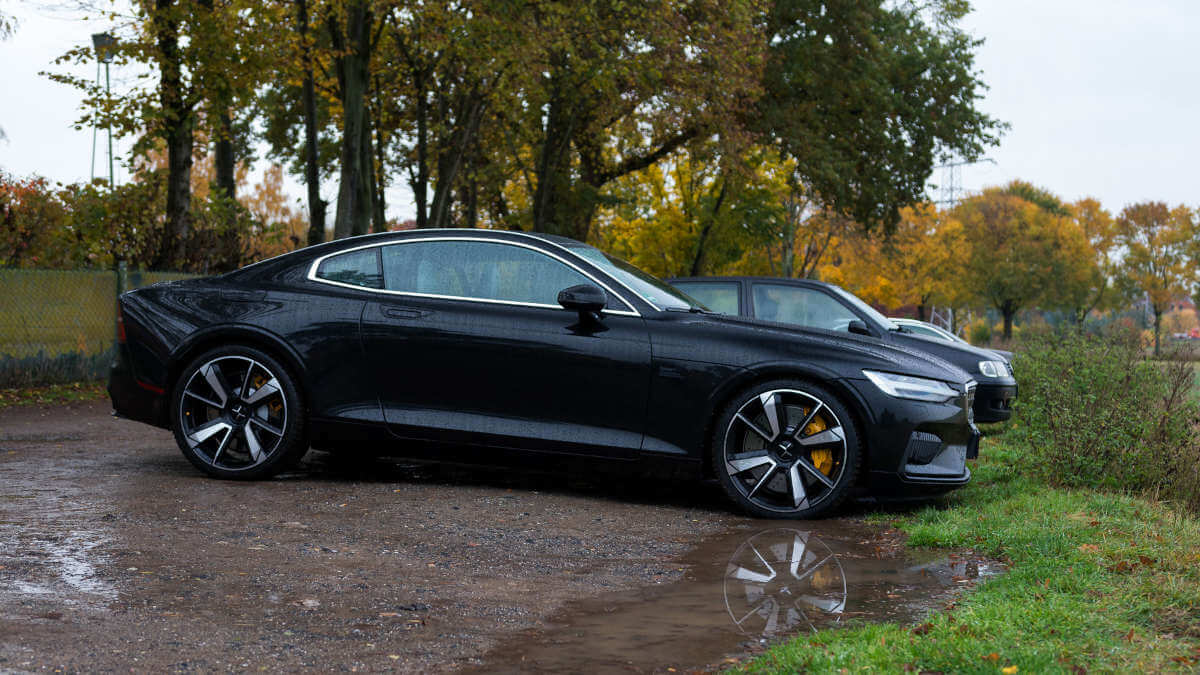

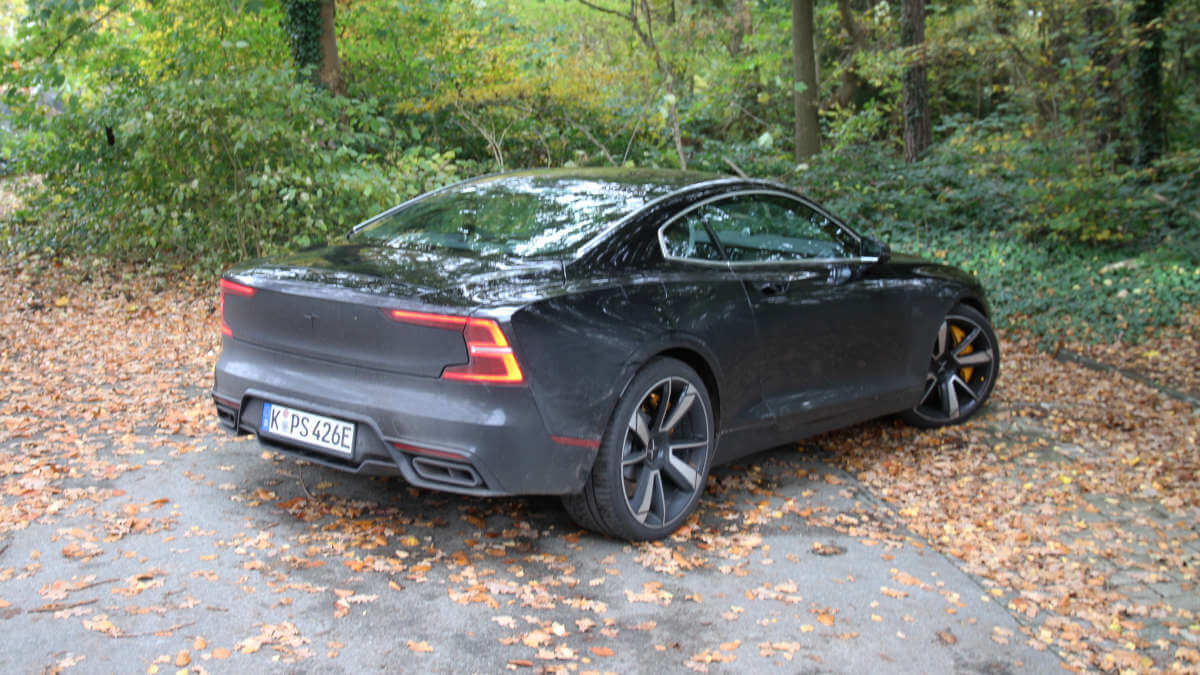

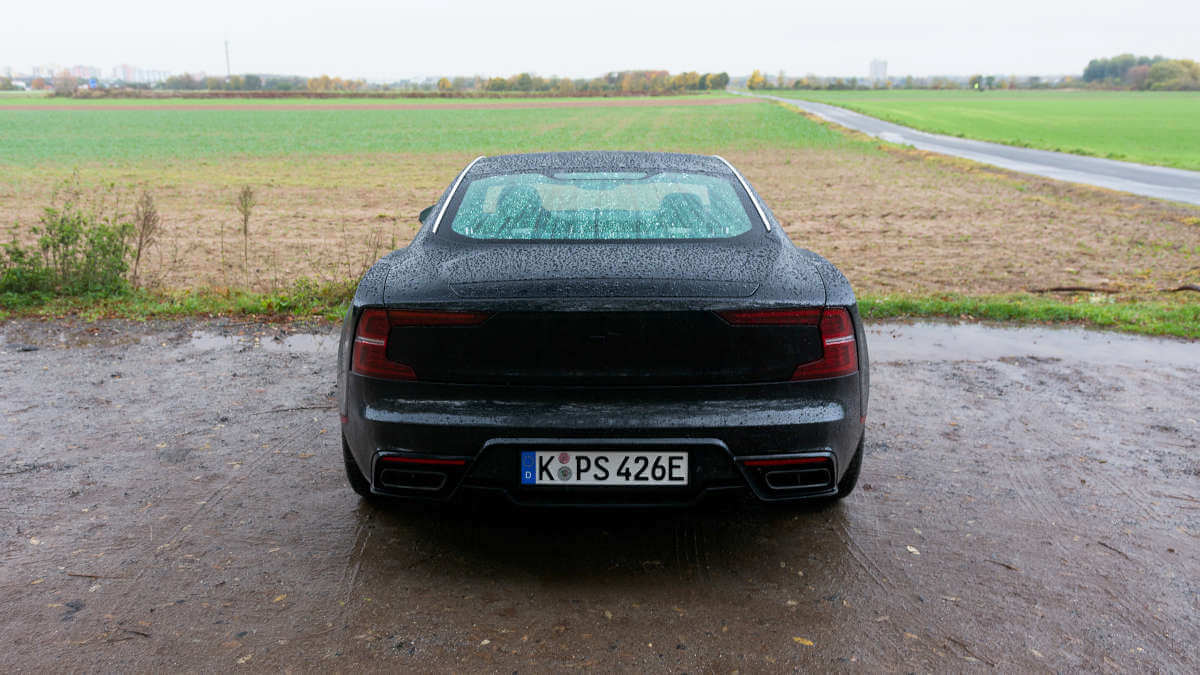

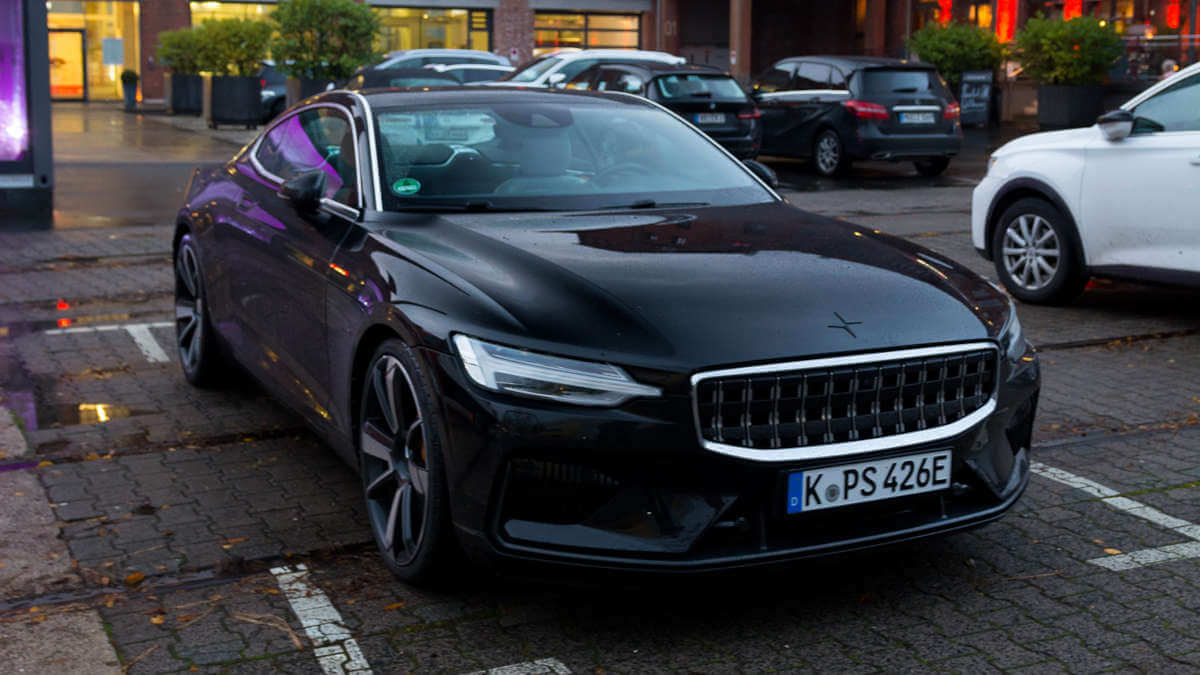

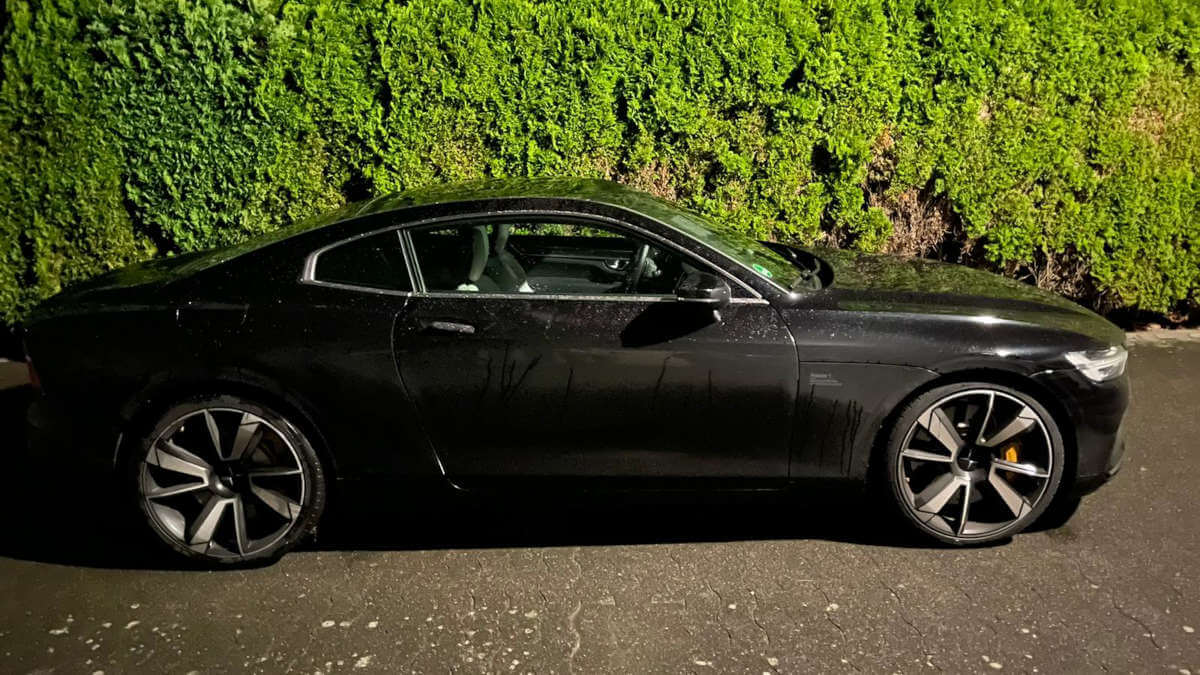

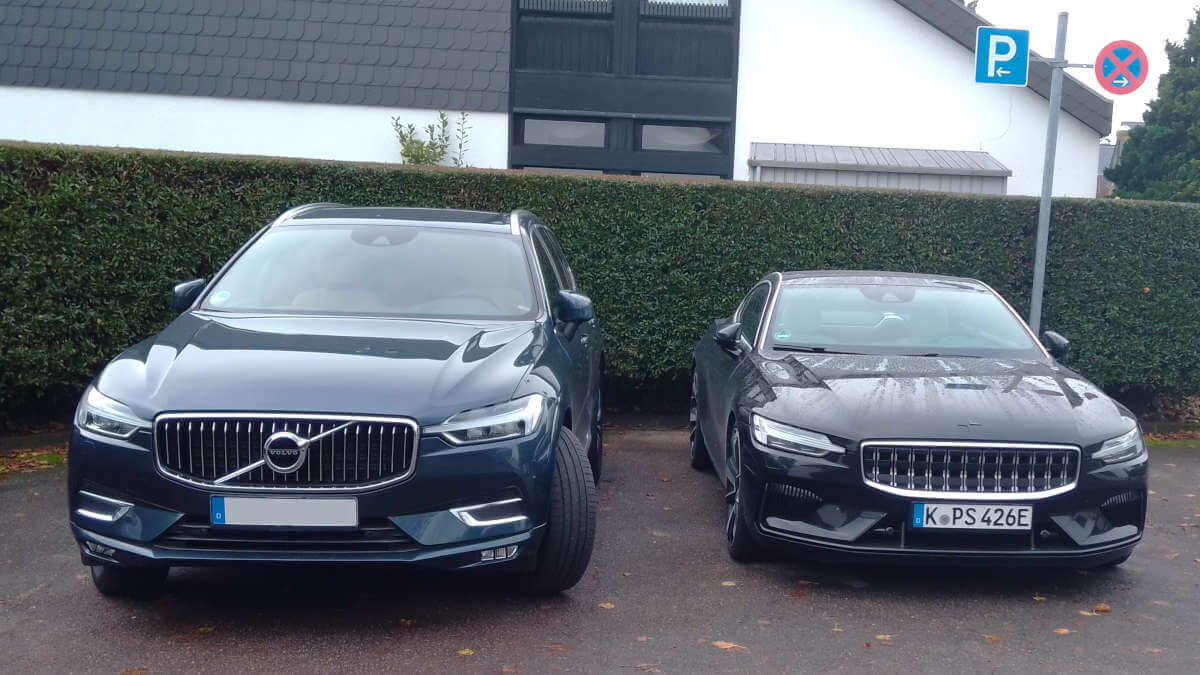

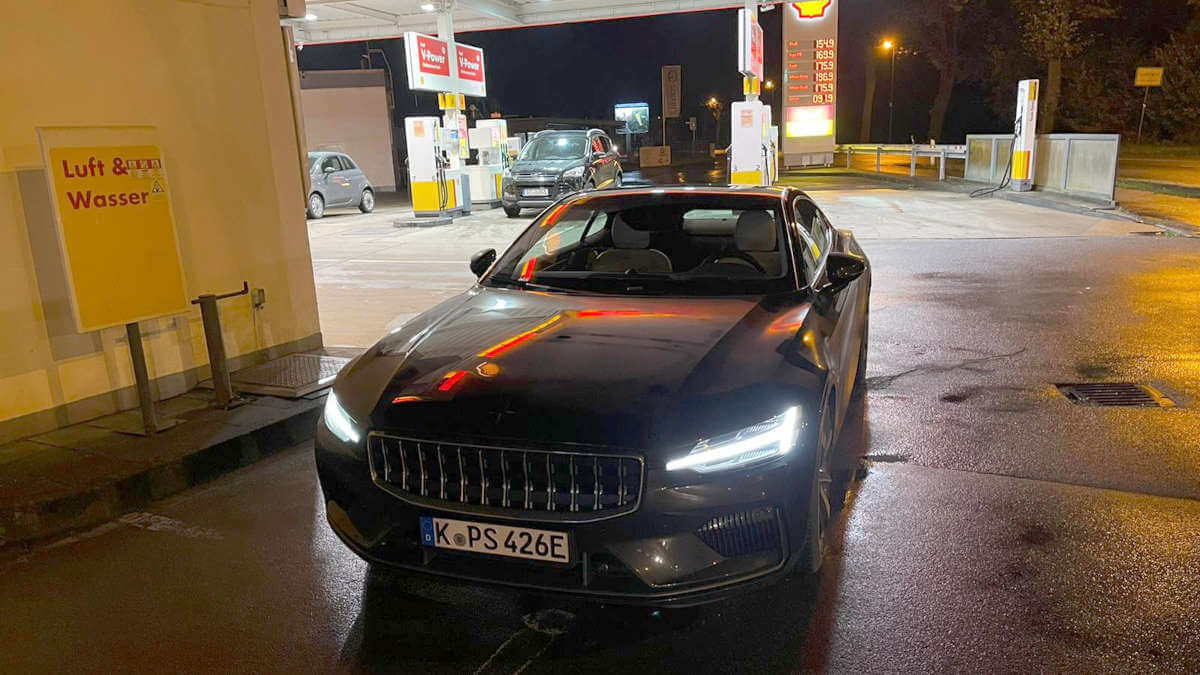

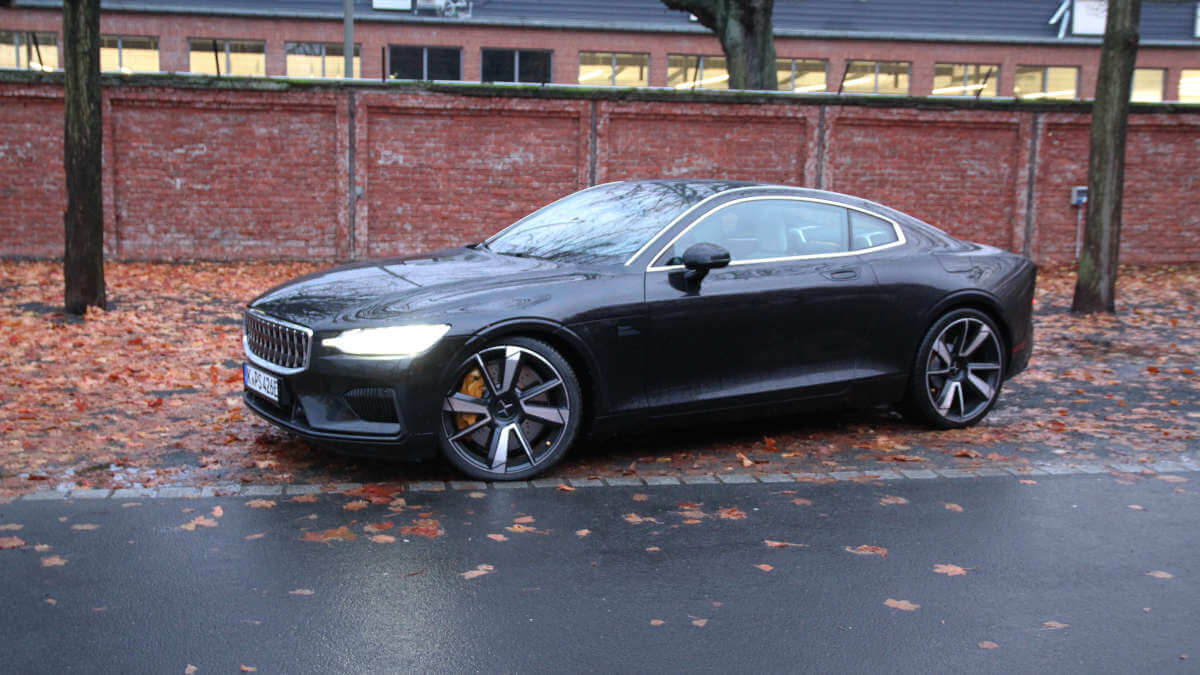



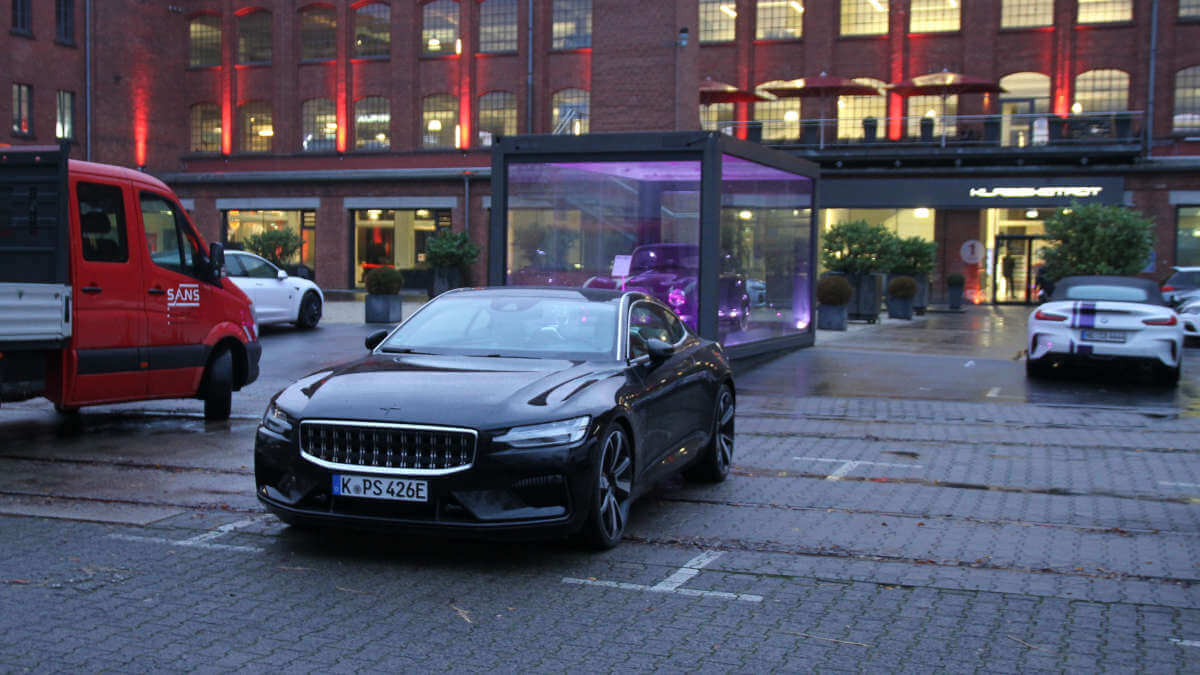

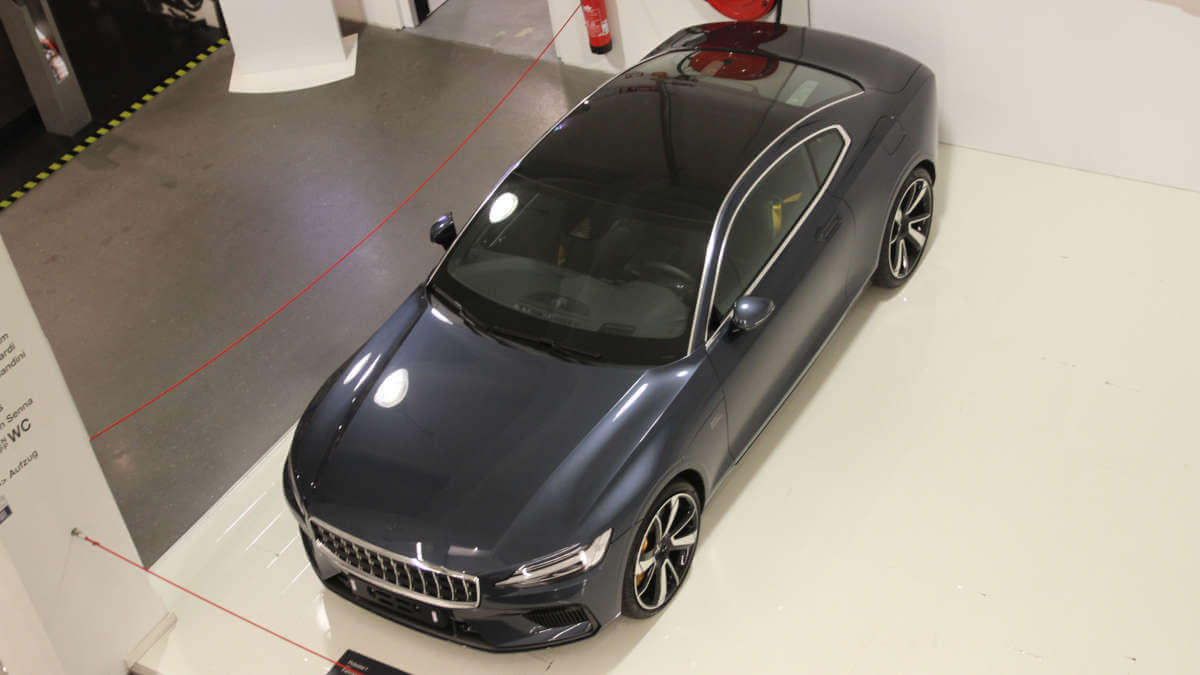

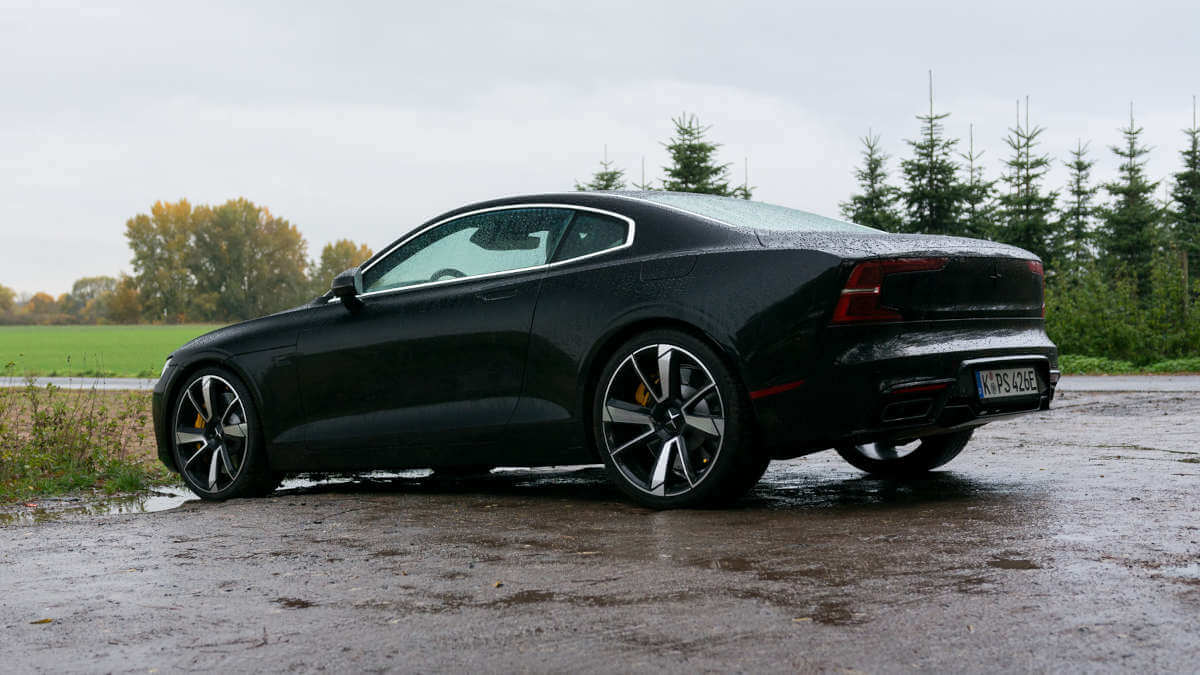



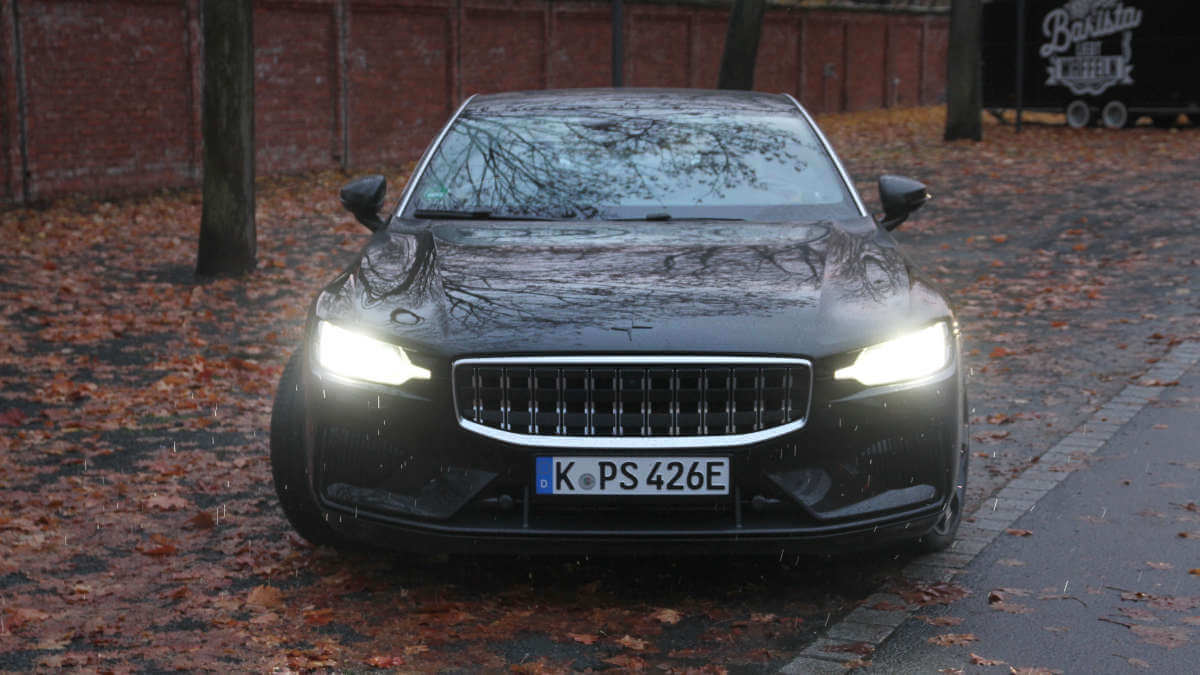

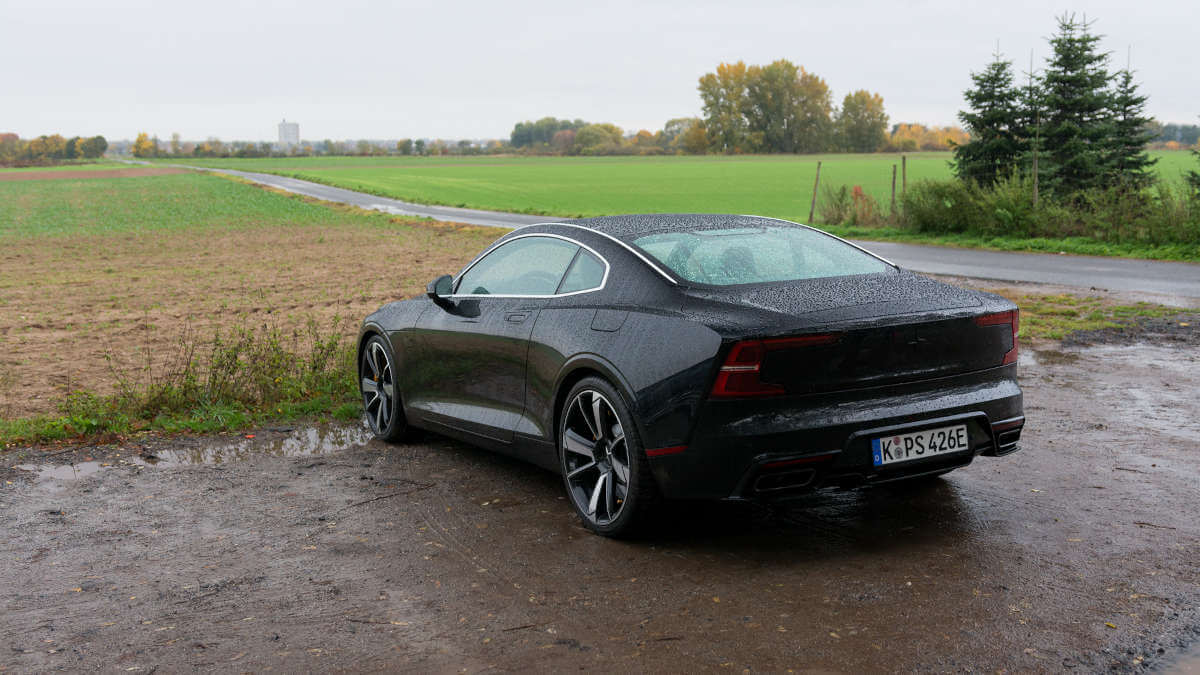

Beautiful shape catches the eye of passersby
In other words, this was the first time a Chinese car rolled onto the Secret Classics editorial parking lot. At the same time, it was also the first car with a hybrid drive. We have already mentioned the reason for this look beyond the classic cars above. We were clearly interested in the question of whether car collectors should consider this coupé in their purchasing decisions in the near or distant future. A first tour around the car provides the clear opinion that the exterior shape alone is a good argument for a purchase. Even if the elegant lines can’t hide their kinship to Volvo, a classic coupé is simply always worth a look. This impression was also supported by numerous reactions from passersby during the week in which the Polestar 1 accompanied us. However, it also became clear here that the brand hasn’t yet arrived in the public’s consciousness. No wonder, with only 24 newly registered examples of the 1 in Germany in 2020.
Key not premium-worthy
Now we were finally supposed to open the doors and look inside. For this, we were handed probably the ugliest detail of the Polestar 1: its key. This much too light black plastic part has similarities to a matchbox and in no way lives up to the premium claim of the brand and vehicle. Fortunately, you can simply leave it in your pocket and use the buttons on the door handles to unlock and lock it instead. The doors are large and open wide. However, one quickly asks the question, “For whom?” Their sheer length quickly makes it difficult to get into the car in tight parking spaces. And getting into the rear seats can’t have been seriously in the developers’ specifications. These two emergency seats unfortunately have no legroom whatsoever for average-sized adults in the front seats. This means that even children fall out of the equation as rear seat occupants. Getting there is also made more difficult by the seat belts attached to the front seats.
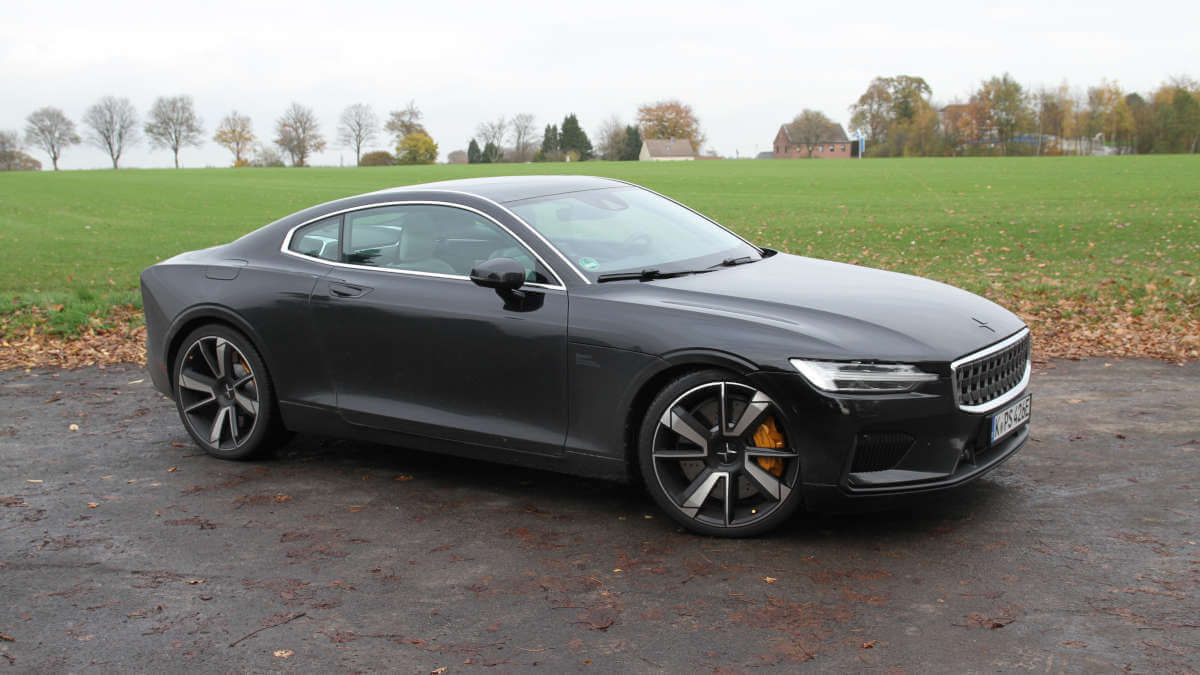

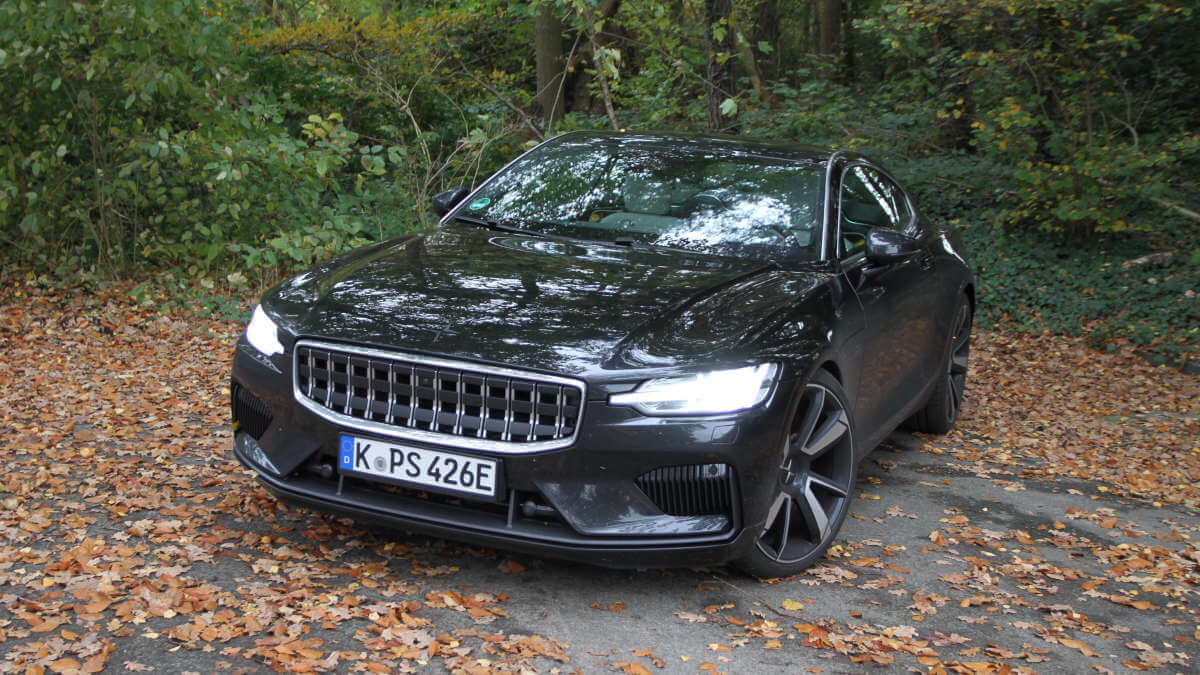

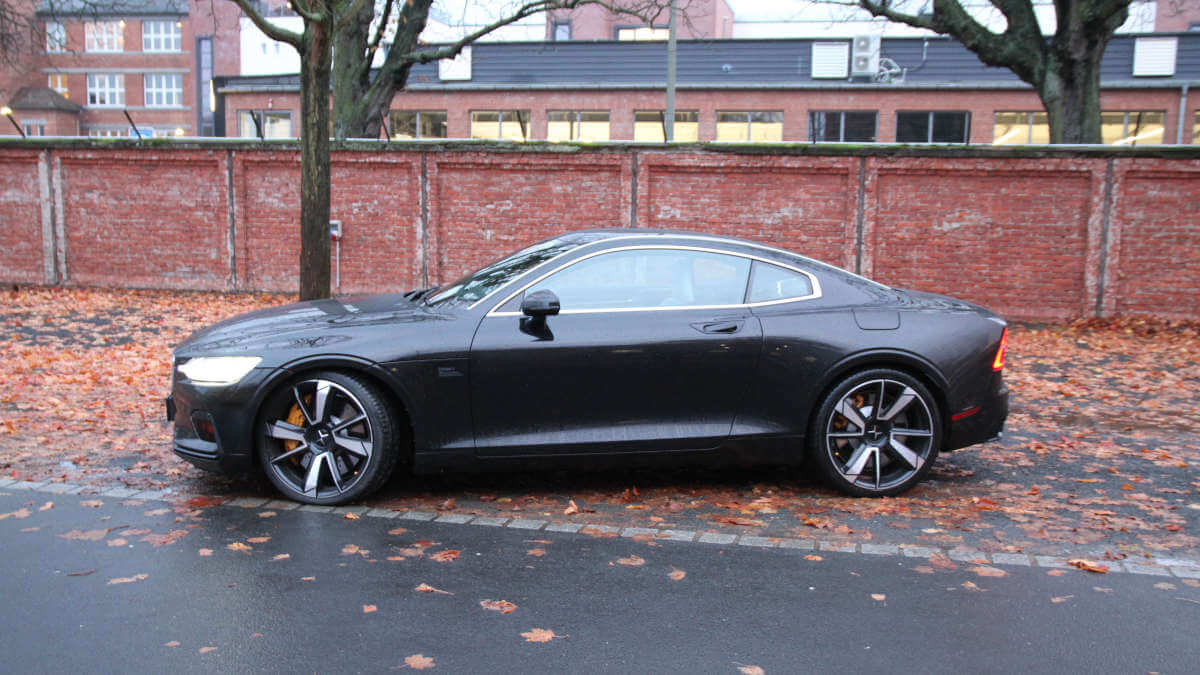





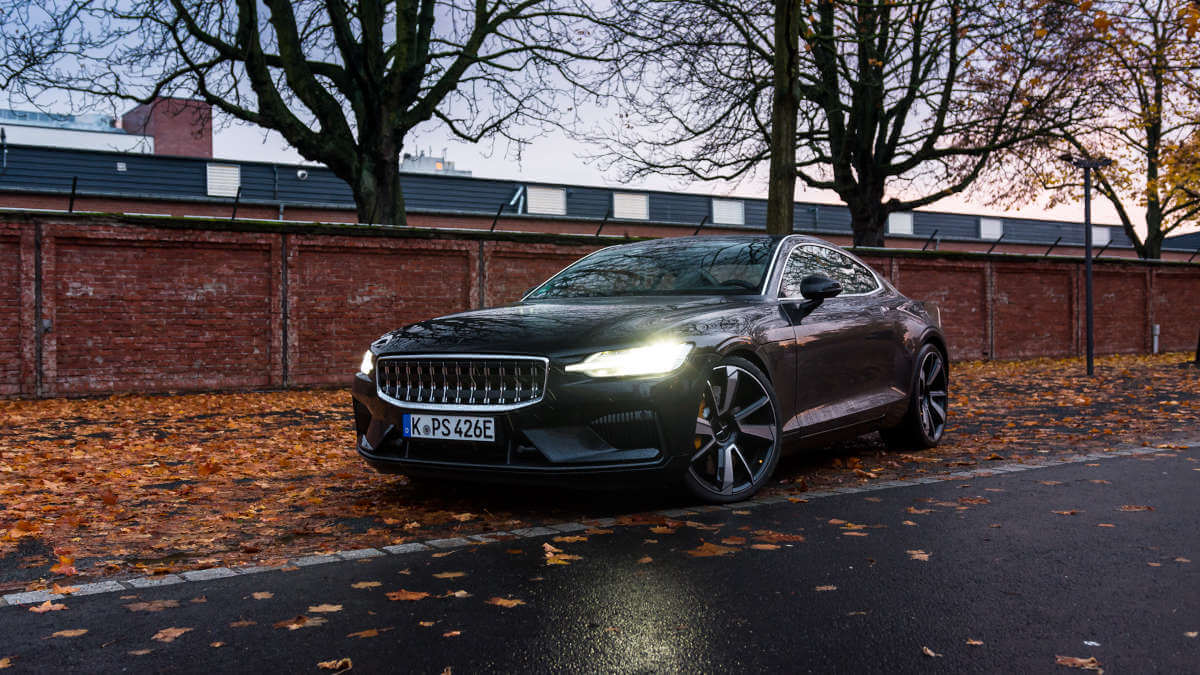

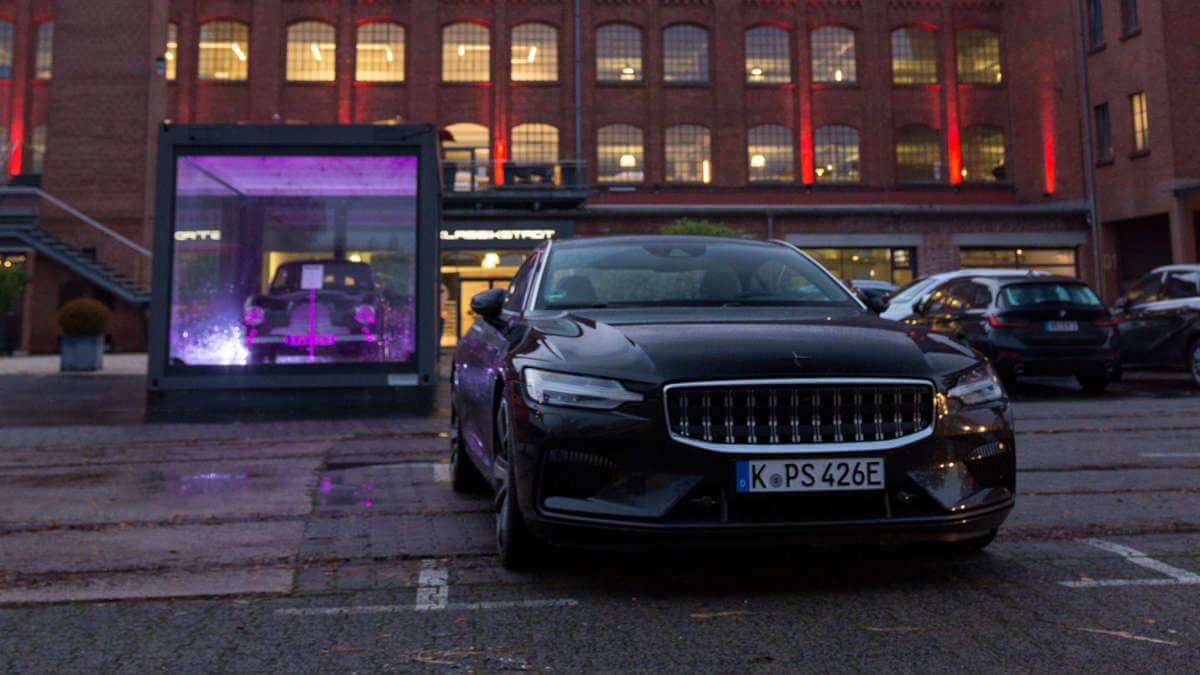

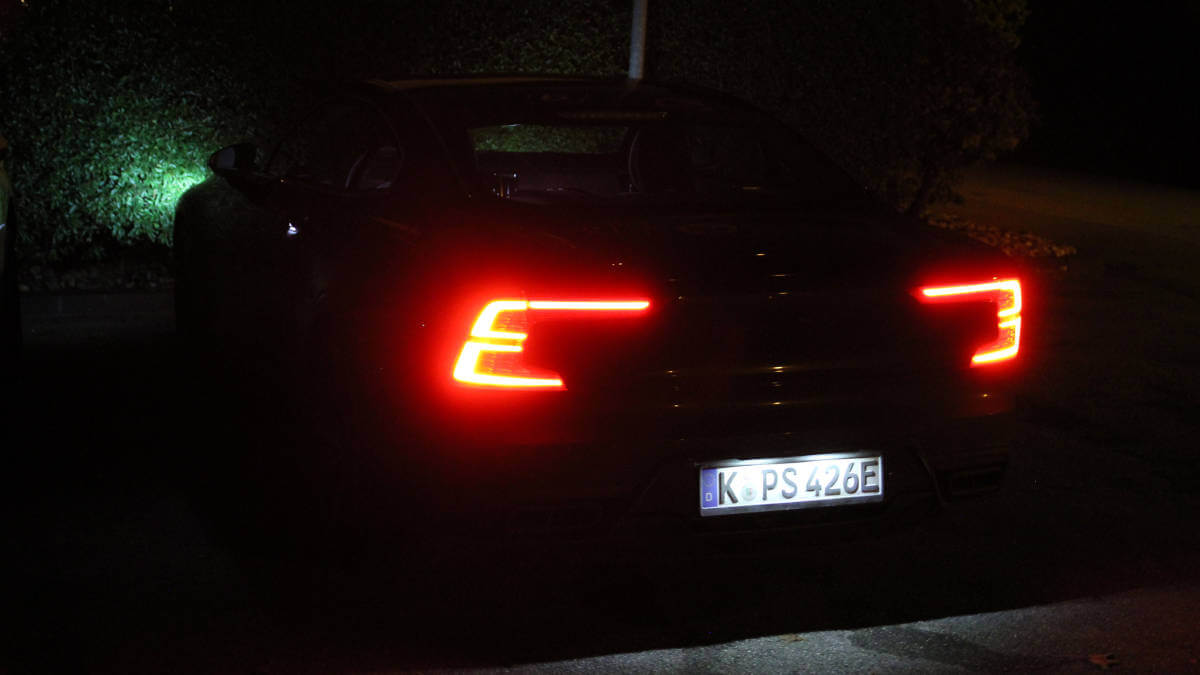

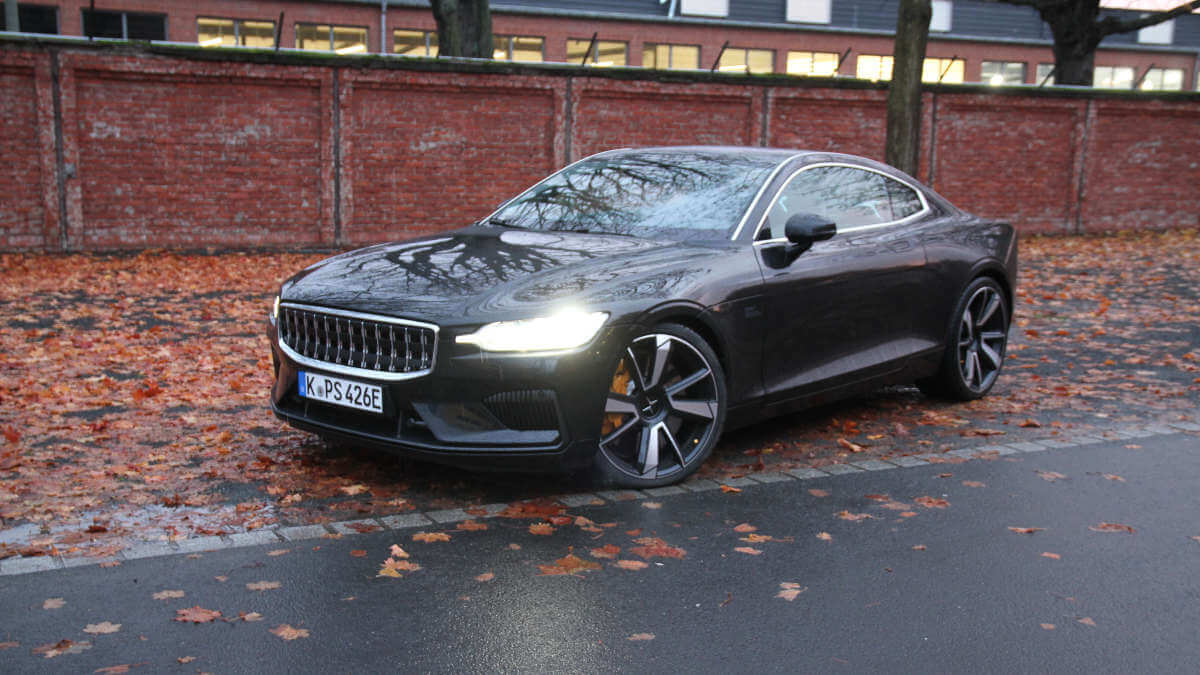







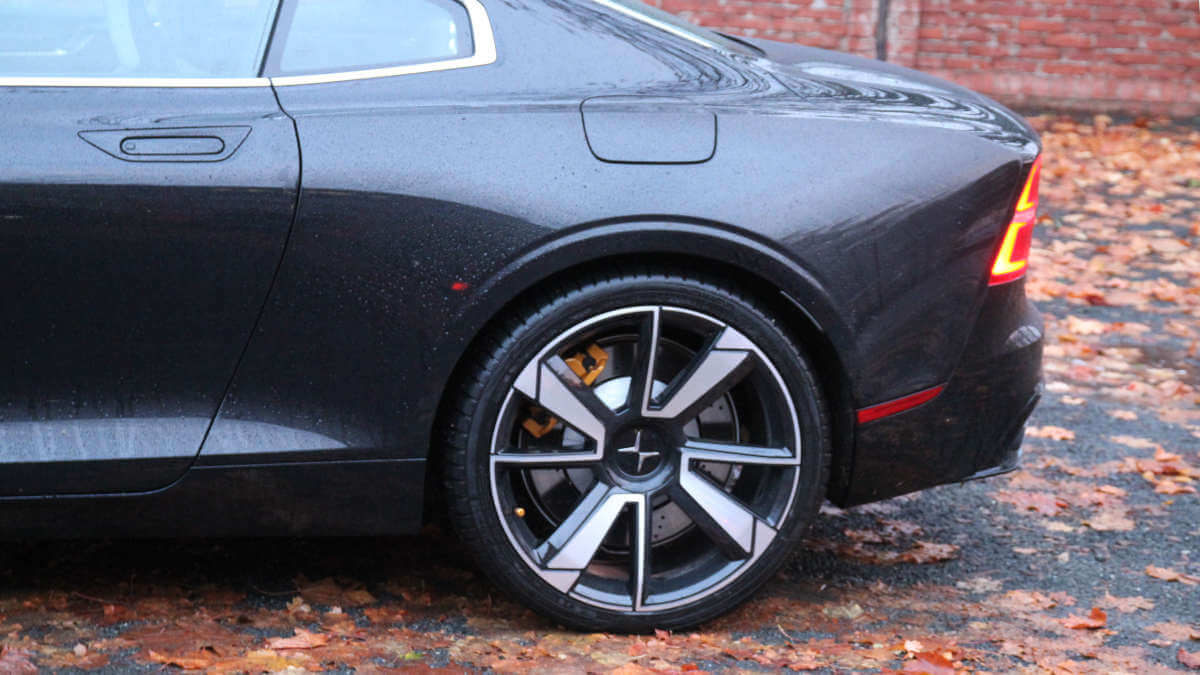





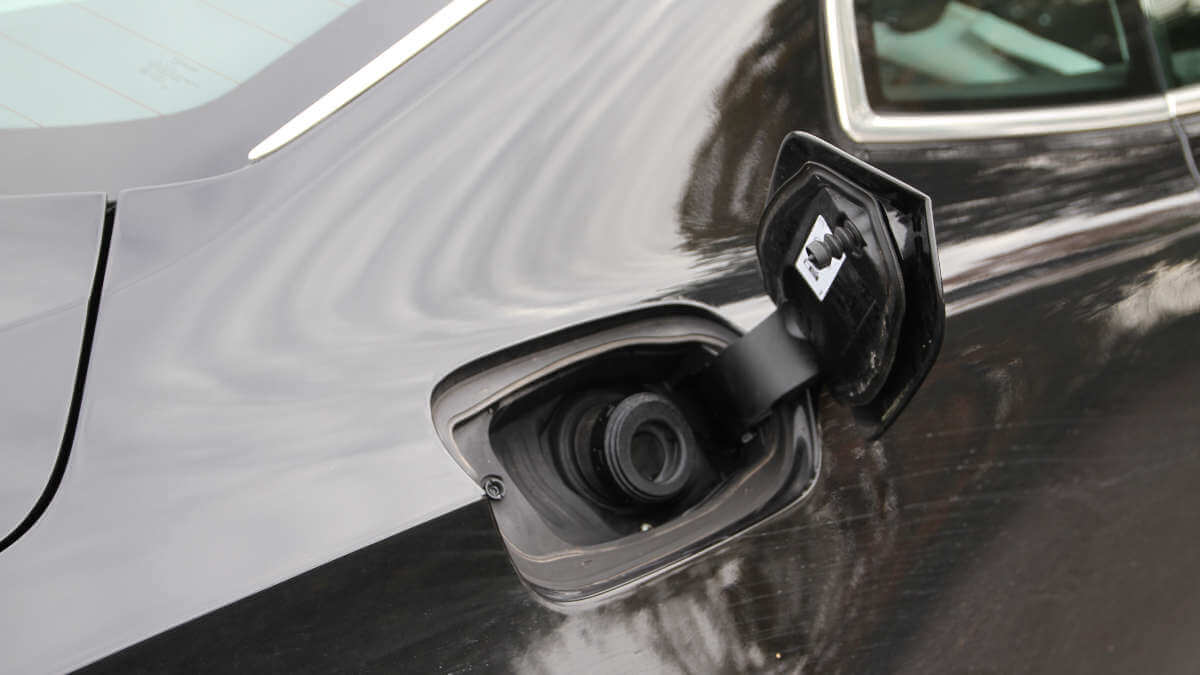

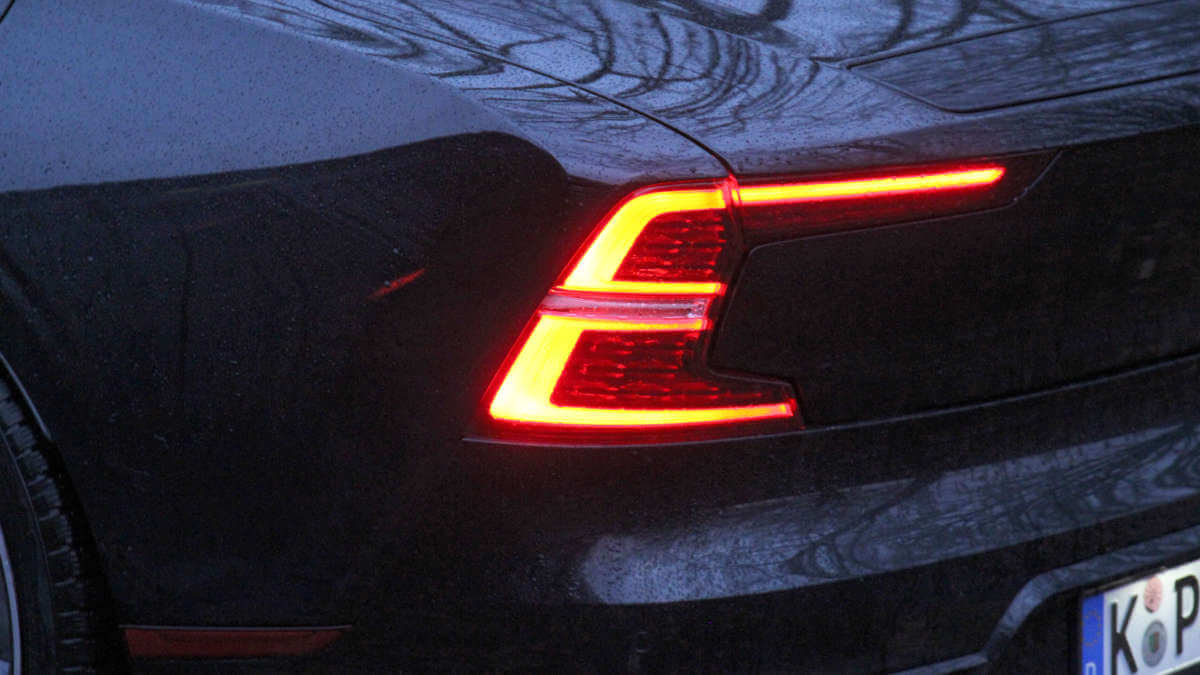

Golden seat belts for 60th anniversary
Speaking of seat belts. The golden-yellow color of the Polestar 1’s front seat belts catches the eye. Only at second or third glance, however, does it become clear why. When the car finally went into production in 2019, Volvo was celebrating 60 years of seat belts. That’s why the seat belts wear gold and the seat belt buckles have the engraved lettering “Since 1959”. For the front seats, Polestar offers a choice of white or black leather, while the rear seats are always black. This definitely suits the main use as additional luggage space, which is however limited by the separation between the two seats. In the front both occupants feel absolutely comfortable even on long journeys. Heated seats and steering wheel ensure a feel-good atmosphere in the current outside temperatures, as does the audio system from Bowers & Wilkins including DAB radio. Everything you see here in terms of equipment comes with the Polestar 1 ex works.
Full equipment ex works
In fact, the options list for this coupé only includes the item “matte paint colors”. The five main colors are glossy ex works, but can be ordered in matte for an extra € 5,000. Otherwise, all the equipment features are standard, even the large panoramic glass roof with LED pole star or the 21-inch wheels available in three different colors. The digital display behind the steering wheel, the head-up display in the windshield, the complete infotainment system and even the steering wheel come from Volvo. These components only show Polestar logos, but by now they can no longer hide their age. The graphics and effects debuted in the S90 back in 2016, which is also evident in some of the long operating paths in the system. For example, the navigation system suggests the POI search as the default setting, not the one for addresses. The carbon trim parts and a surrounding chrome strip that includes speakers in front of the rear window are independent features for the Polestar.
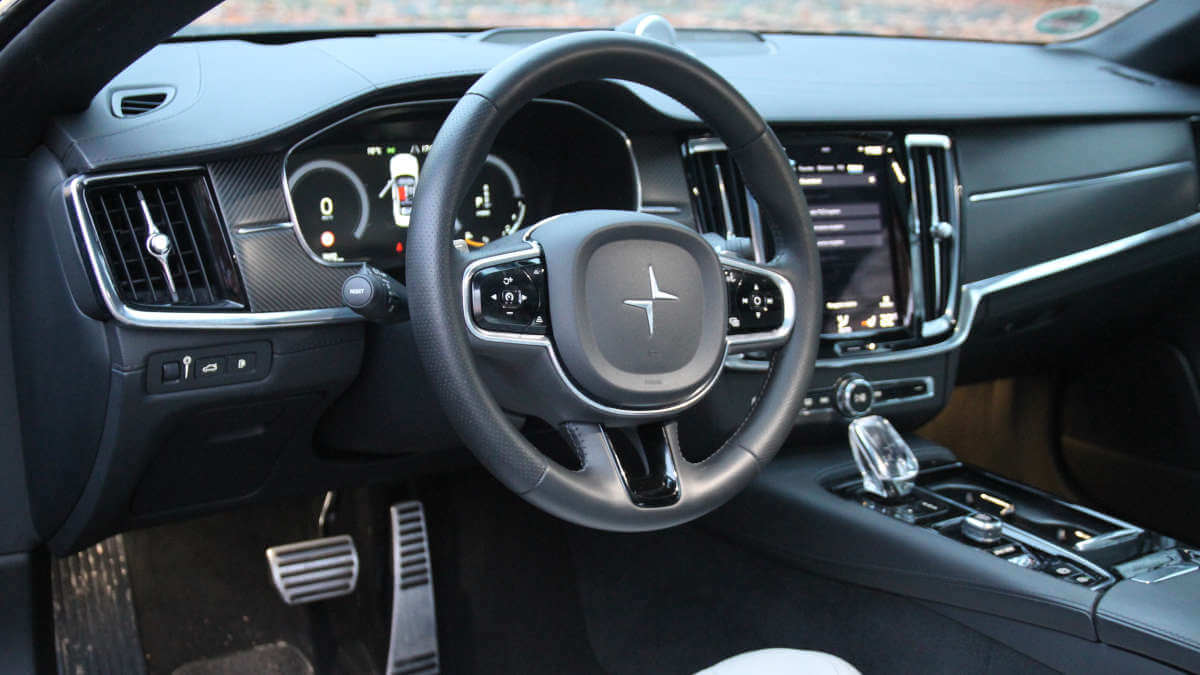





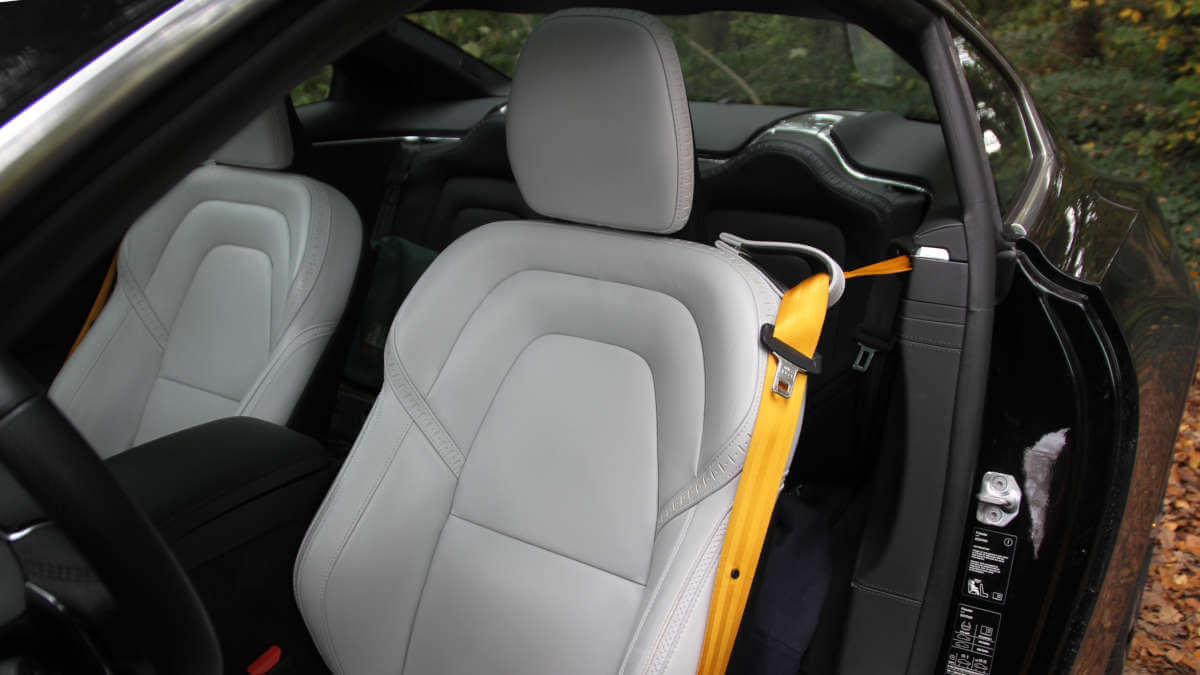

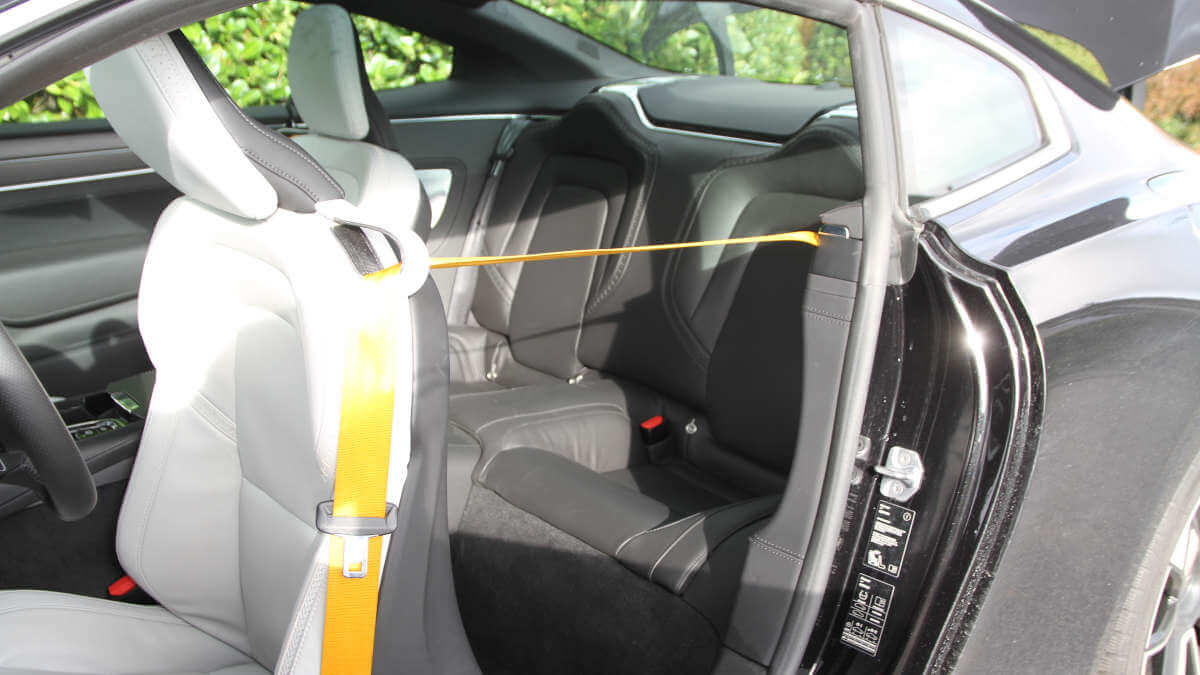

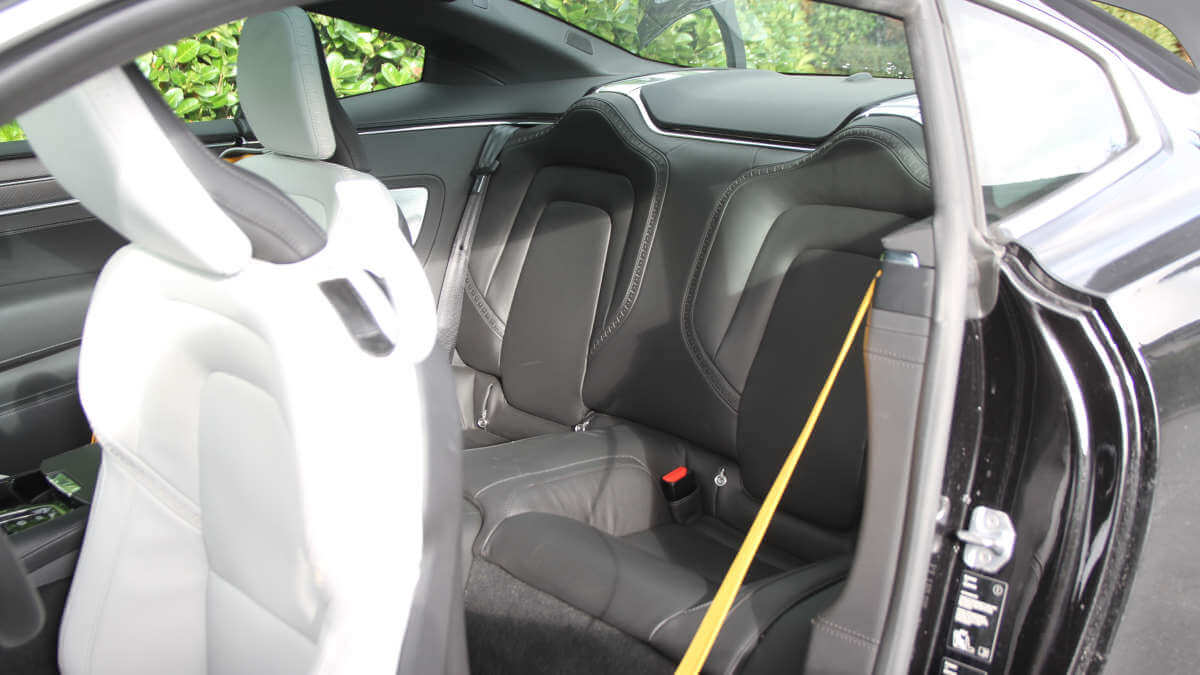



Four driving modes, 609 hp in total
Enough about the exterior and interior. How does the Polestar 1 drive? A twist of the switch on the center tunnel and – nothing. The car basically starts in hybrid mode and thus initially purely electric. A rotary-push switch below the start button and the crystal glass gear selector allows you to choose between the four driving modes “AWD” (permanent all-wheel drive), “Pure” (pure electric), “Hybrid” (car automatically selects the drive mode) and “Power” (full performance available). To understand this, we have to step out for a brief moment to take another look at the technical concept of the Polestar 1. Hidden under the long hood is a two-liter four-cylinder engine with supercharger and turbocharger. On its own, it produces 227 kW/309 hp and 435 Nm of torque. There is an electric motor between the crankshaft and the eight-speed automatic transmission, and two more are installed on the rear axle. The data sheet certifies a combined system output of 448 kW/609 hp and a full 1,000 Nm of torque.
High weigth prevents sports car dynamics
However, those who expect a kick in the back with every step on the accelerator pedal will soon be disappointed. The Polestar 1 accelerates like on a rubber band from a standstill up to the electronically controlled topspeed of 155 mph. Real sports car acceleration is just as foreign to it as hard springs. Adjustable Öhlins dampers on the front axle make the handling a bit sportier, but the car still doesn’t become a track tool. The main reason for this is hidden in the center tunnel and under the trunk floor: the batteries. They drive the kerb weight of the 1 up to around 2.4 tons, which want to be carried along in every bend and decelerated during every braking maneuver. However, with its basic design as a sporty and comfortable Grand Tourer, the Polestar is more likely to impress on long-distance trips than on narrow country roads.
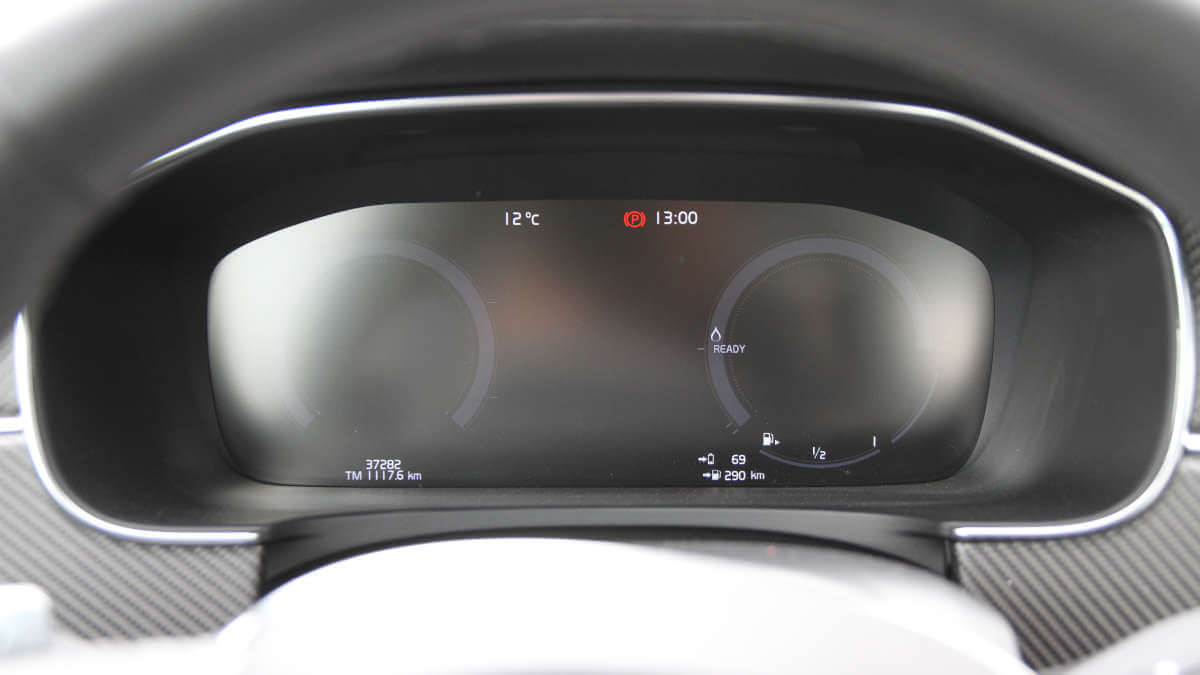



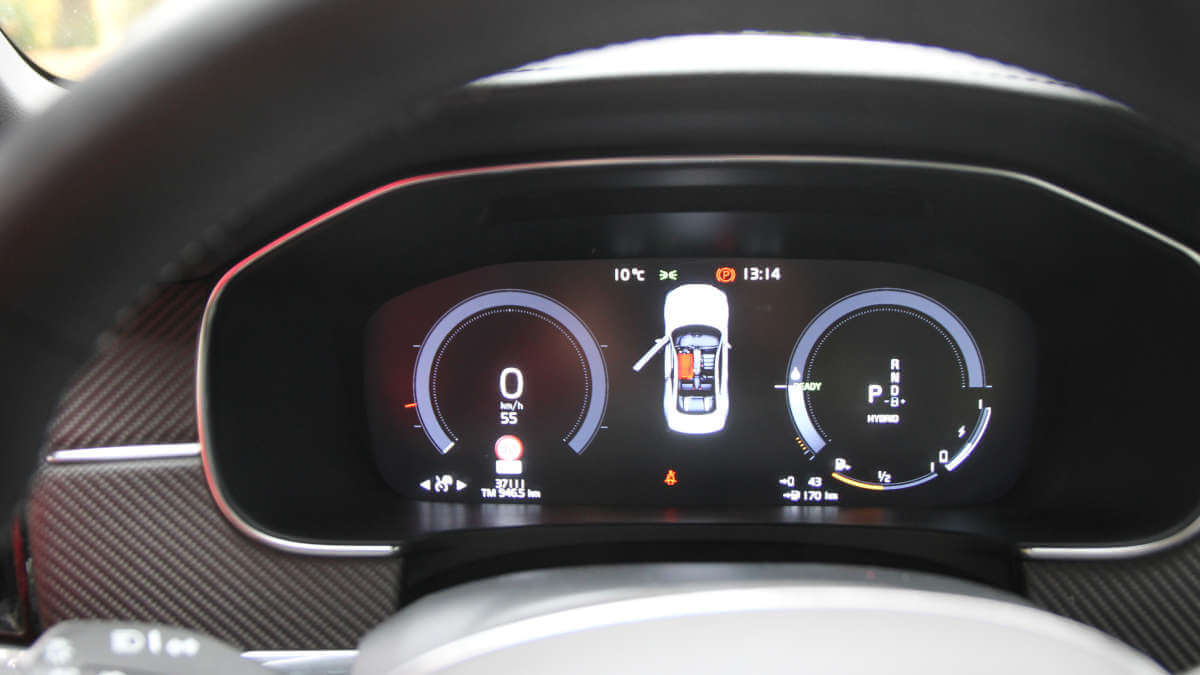



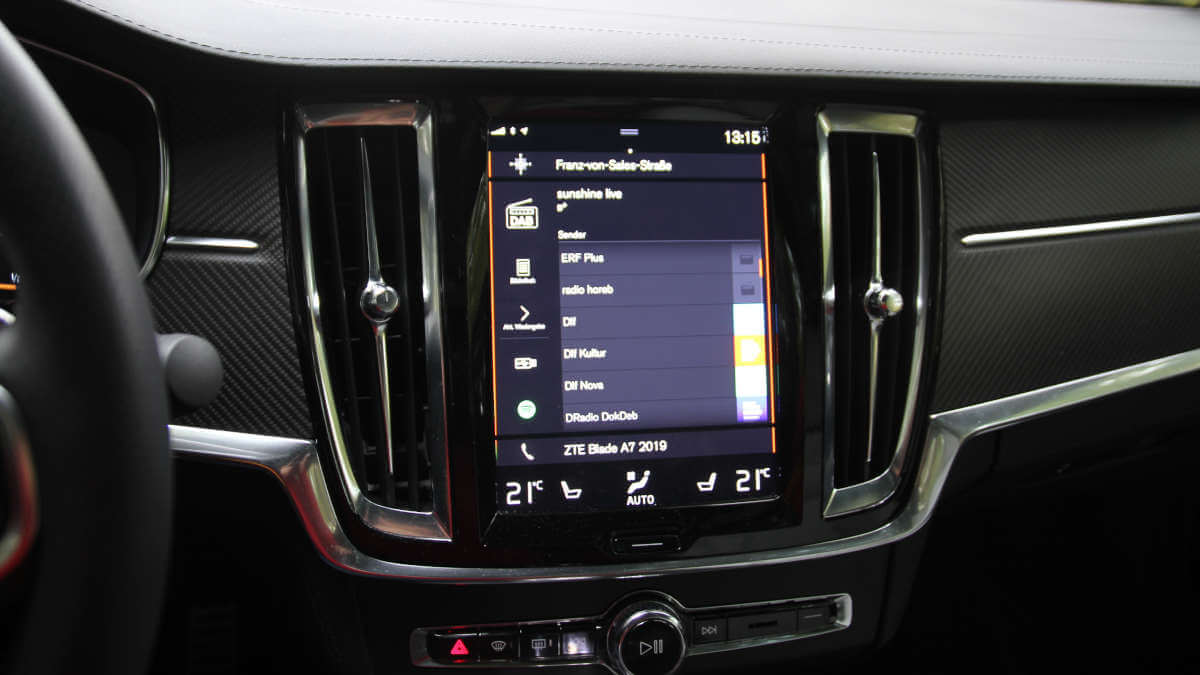

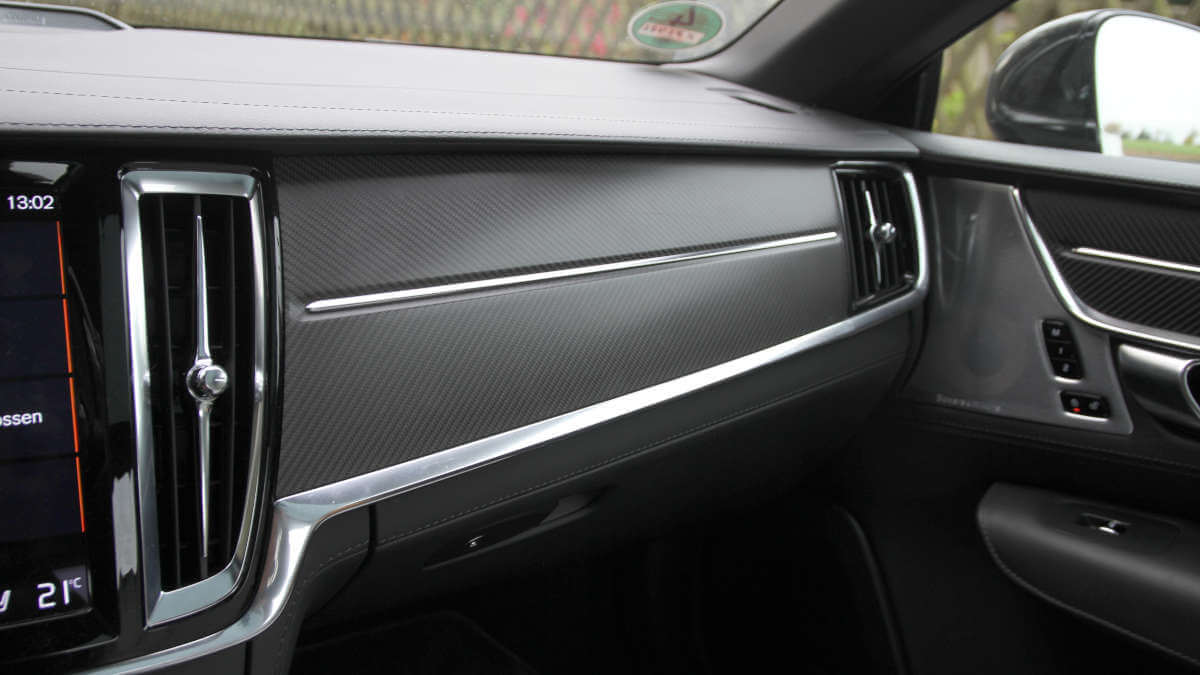

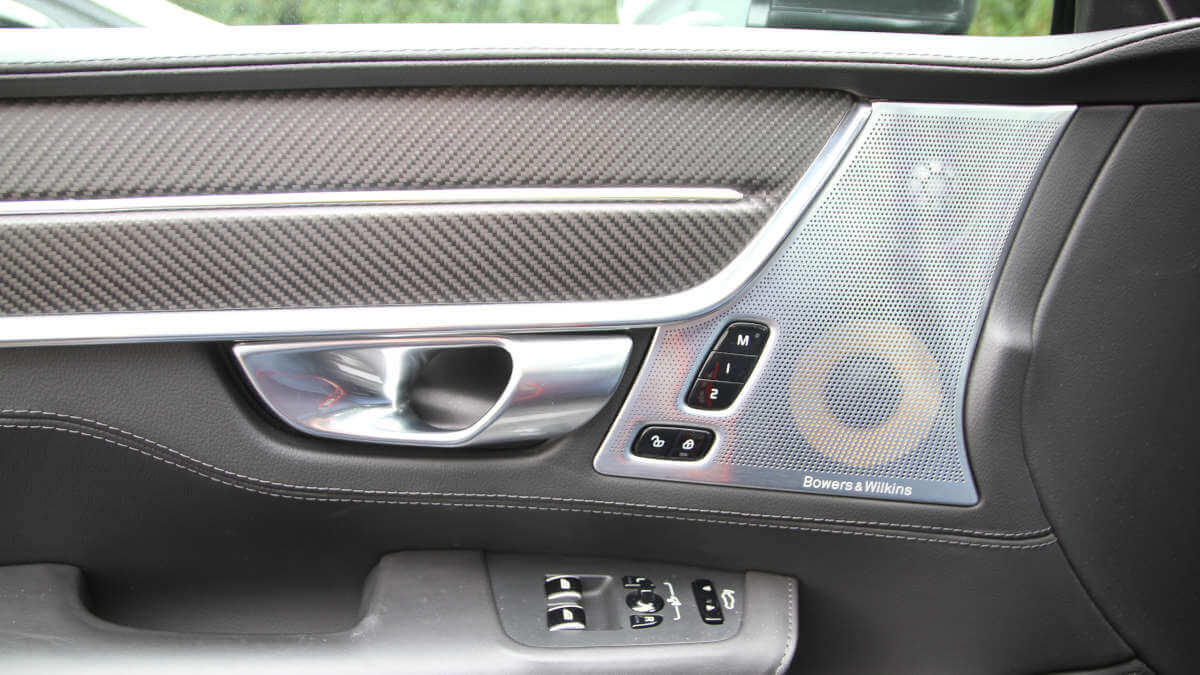

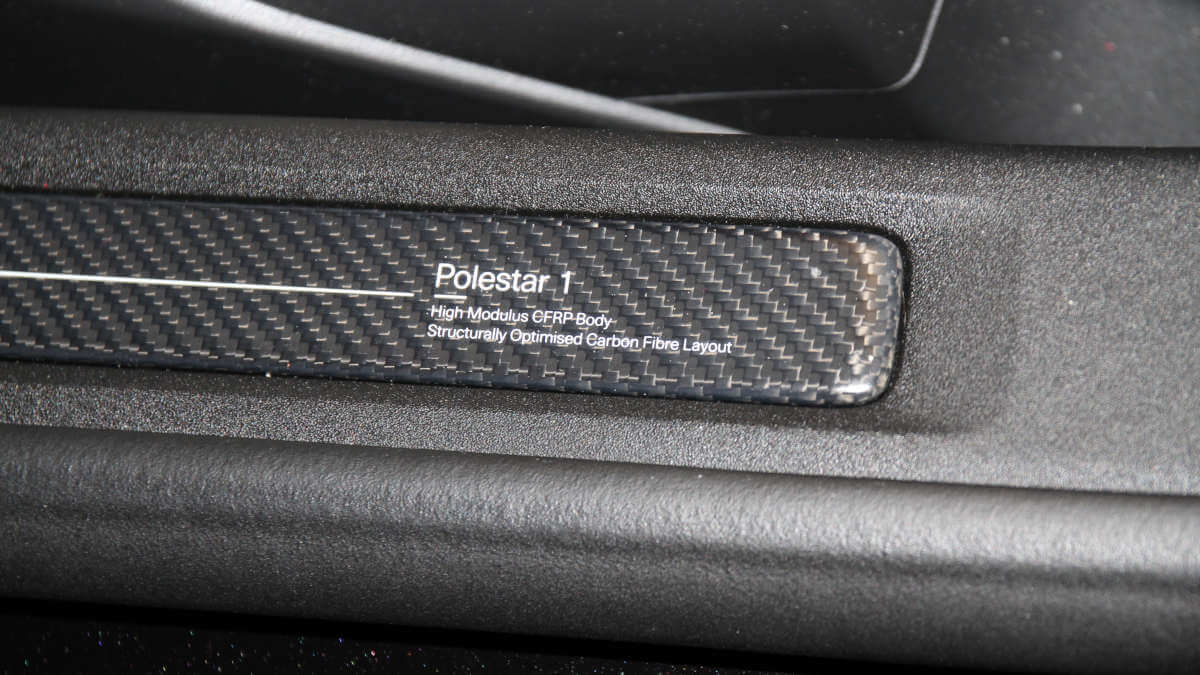

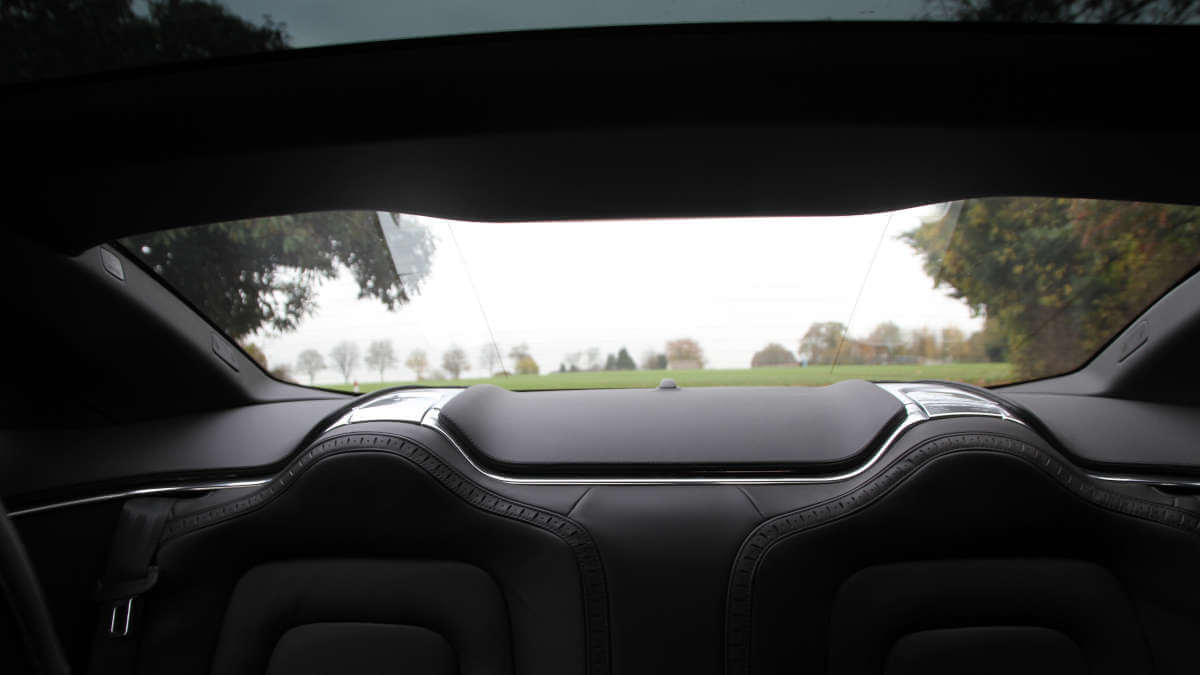

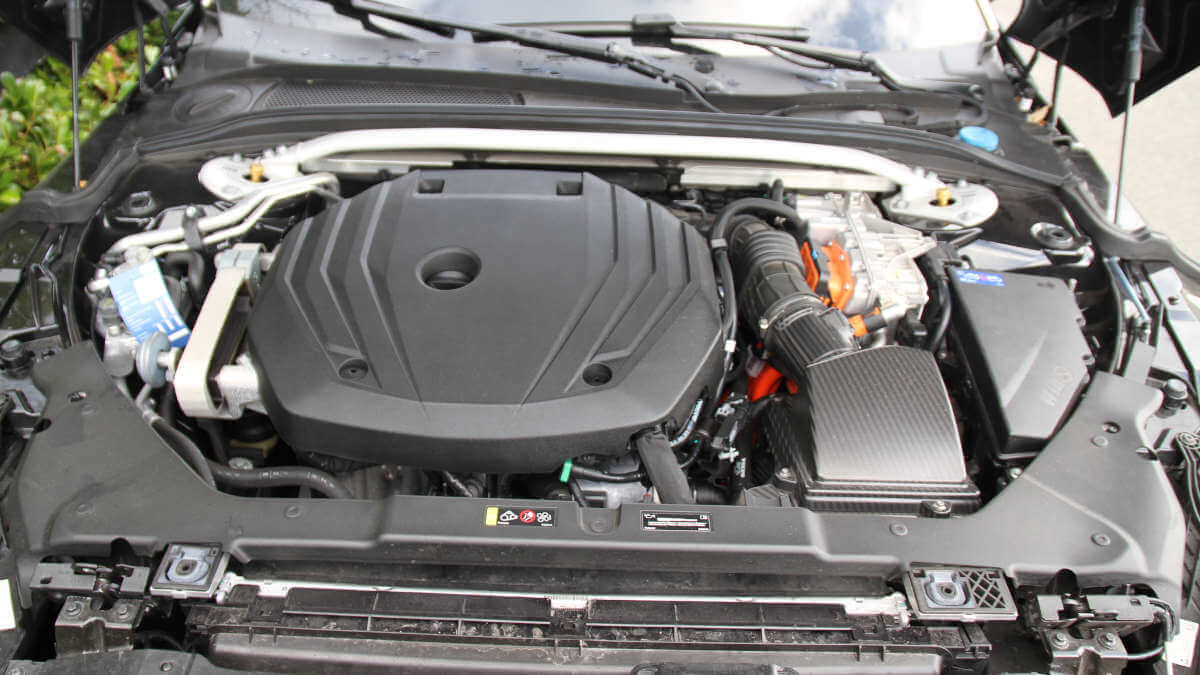

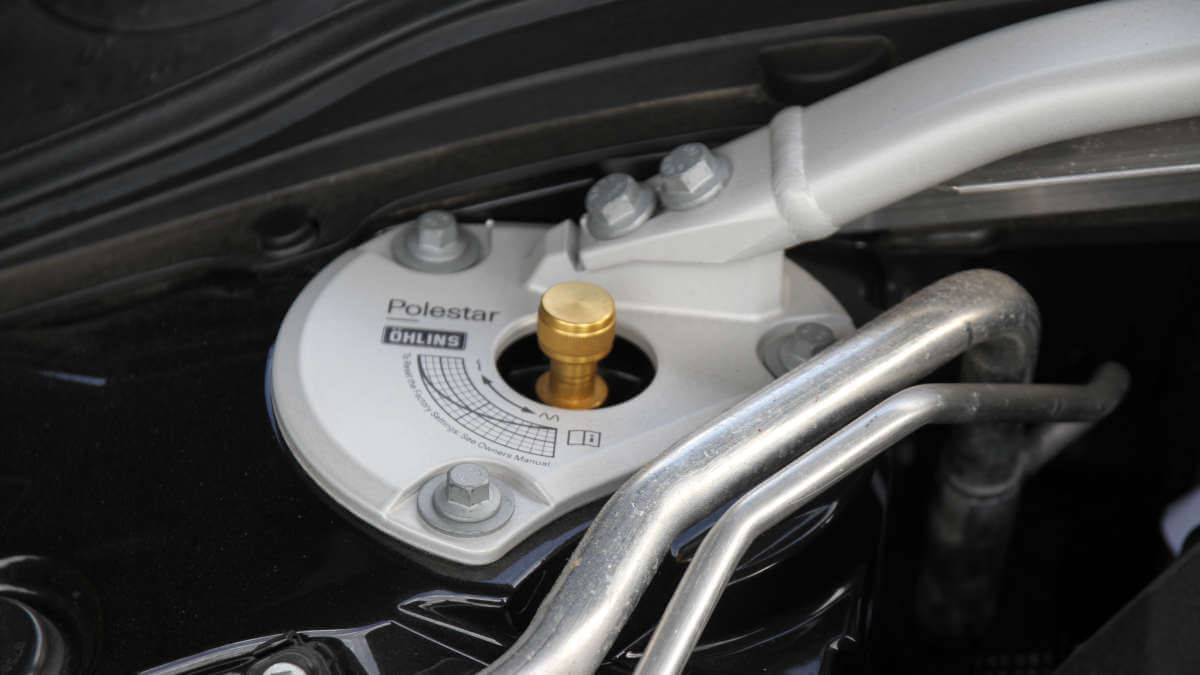

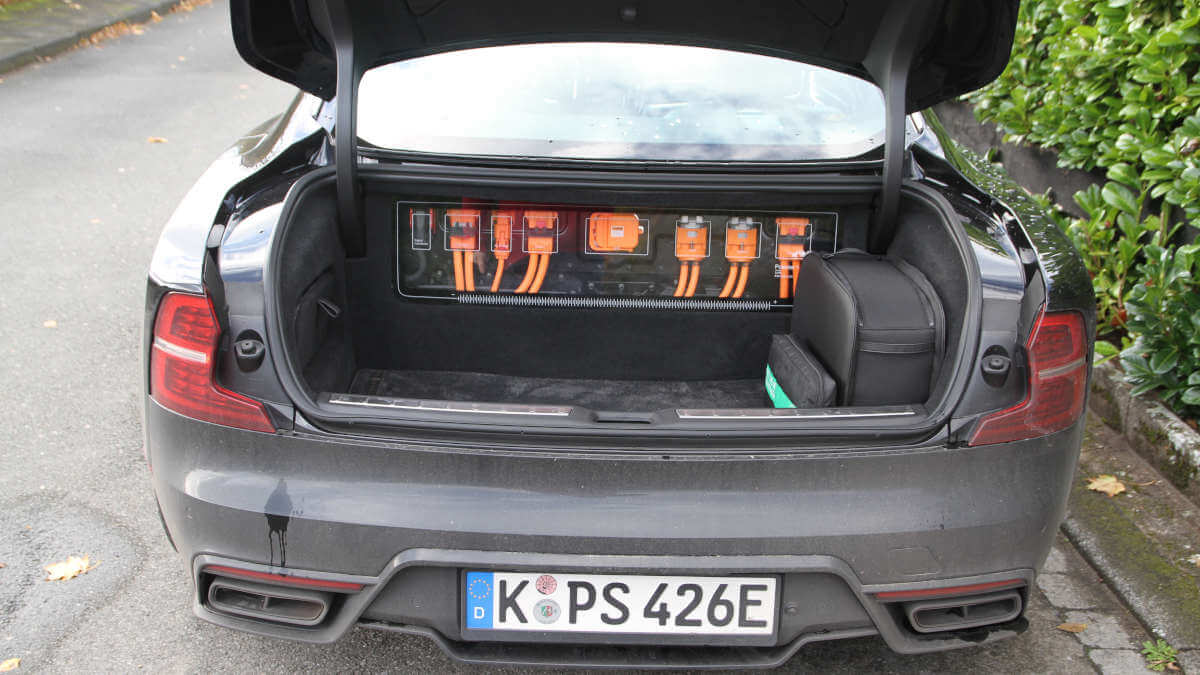

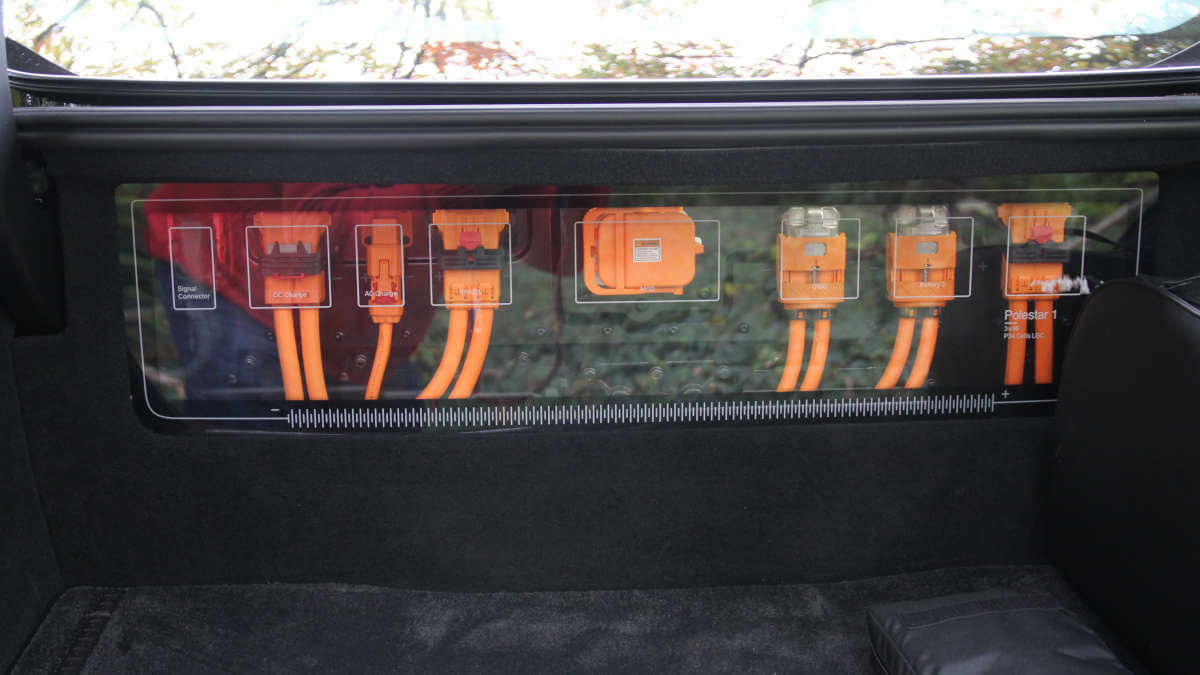

Very small trunk
As a classic travel companion for a well-off couple, the Polestar 1 is nevertheless only of limited use. Once again, the distribution of the batteries is responsible for this, but also the tendency towards showmanship. Pressing the lowest button on the key or a button in the cockpit opens the boot lid. Underneath, only 126 liters are available for luggage de to the very high trunk floor and a show display of the electric drive technology. If the factory-supplied charging cable is taken along, this figure is already reduced. But at least the car can then be charged at fast charging stations with up to 50 kW charging power. The average range of the hybrid drive is 900 to 1,000 kilometers (560 to 620 mls) when the throttle is kept low. If you drive faster, the figure is closer to 600 kilometers (370 mls). Purely electric the range is up to 120 kilometers (75 mls). In some rev ranges it is noticeable that the combustion engine sounds more like a well behaved six-cylinder diesel. Not loud, but restrained.
Is the Polestar 1 a collector’s car?
Let’s get back to our opening question, “Can the Polestar 1 become a future collector car?” Yes, but with limitations. Due to its beautiful design and full factory equipment, the coupé is recommended for this category from the outset. However, the price of € 155,000 (in Germany) is very high for a car of this size. Other coupés with similar space cost around € 75,000 less. Of course, they then don’t offer 609 hp system output or even a hybrid drive. But this is precisely where questions lie in the dark that haven’t yet been finally clarified for any hybrid or electric car: What will happen to the batteries in 10, 20 or 30 years? How much do spare parts for the electric drivetrain cost and are they available at all? The answers should be of great interest to car collectors. After all, few want to put their cars in their living room as objects of art. However, you could actually pay for the Polestar 1 with art for a time. It would be interesting to know how many customers have taken advantage of this option.
Images: André Lange, Markus Herrig, Matthias Kierse




